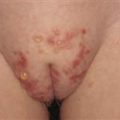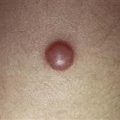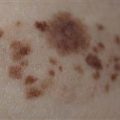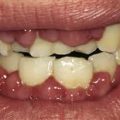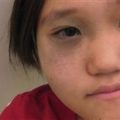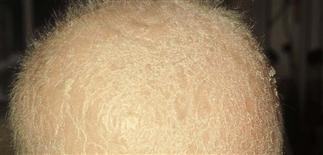
Short, broken scalp hairs in child with Netherton’s syndrome.
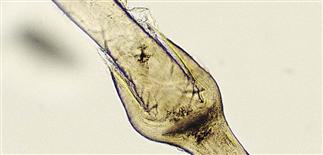
Photomicrograph of ball and socket hair shaft defect in Netherton’s syndrome.
CLINICAL FEATURES
Short hair in the newborn that does not grow often leads to the complaint that the child never requires a haircut indicates a hair shaft defect. Plucking hairs and examining under the microscope will help distinguish among the structural hair shaft defects. There are six major hair breakage types with Netherton’s syndrome of trichorrhexis invaginata (bamboo hairs), ichthyosis and severe eczema the most common. Netherton’s syndrome presents as a red, scaly, hairless newborn. A gene mutation encoding SPINK 5 enzyme creates the defective epidermal barrier. Children with trichorrhexis nodosum have broken hairs that fracture within a hair swelling and is associated with argininosuccinic aciduria, citrullinemia and Menkes X-linked recessive copper transport deficiency. Developmental retardation is common. Pili torti (twisted hair) may be an isolated finding or associated with syndromes with teeth and nail abnormalities. Monilethrix (beaded hair) is autosomal dominant and due to mutations in hair keratins 81, 83 and 86. Non photosensitive trichothiodystrophy (TTD) (banded hair with alternating light and dark areas) is associated with mutations of the C7ORF11 gene, while the photosensitive TTD is due to mutations in ERCC2 and ERCC3 helicases and seen in children that also have physical and developmental retardation.
TREATMENT
There are no effective treatments that will regrow hairs.

